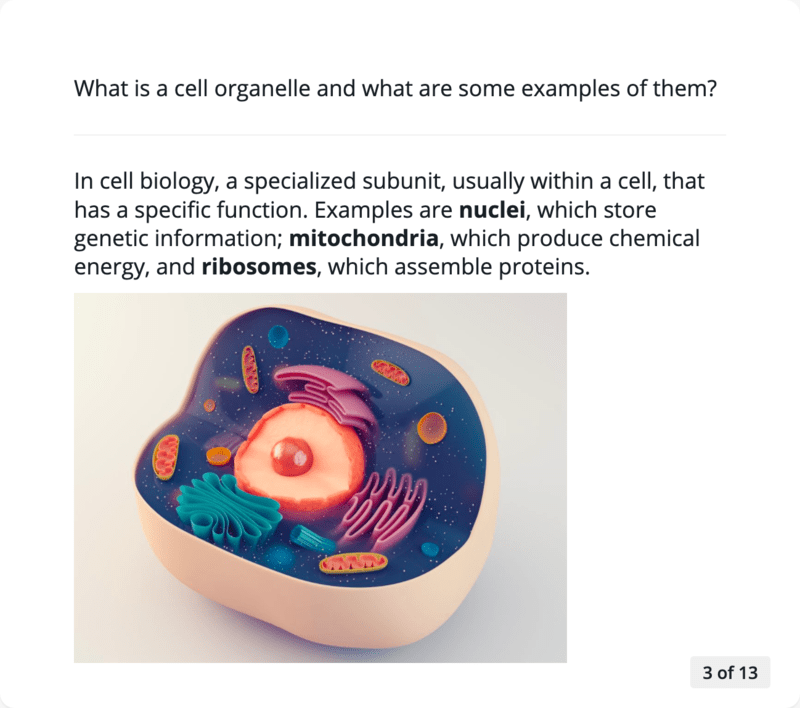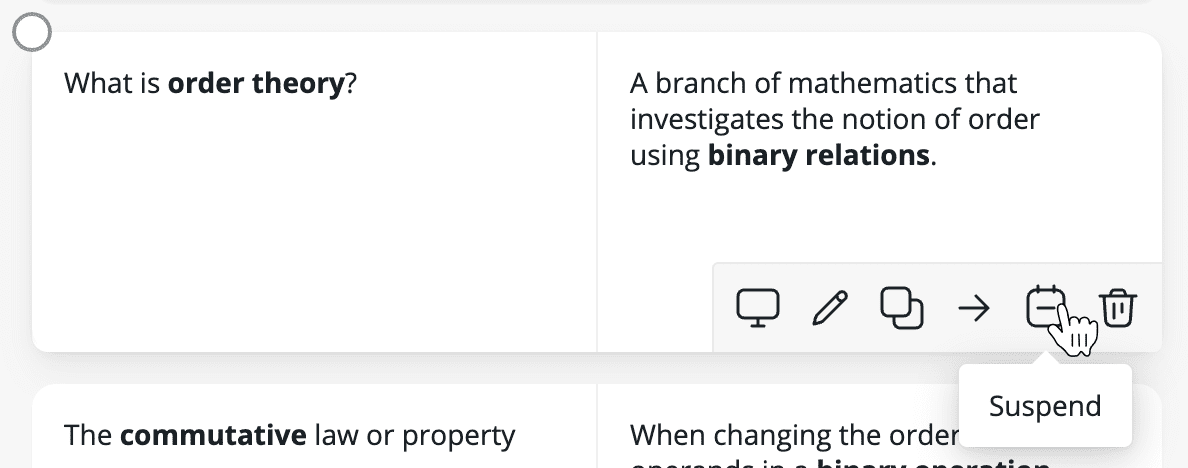How to remember what you study and ace your exams using Active Recall

If you are or have ever been a student, you probably know what it’s like to pull all-nighters cramming for exams, only to realize not long after that you’ve already forgotten most of what you’ve learned.
While cramming remains common, it’s also an ineffective way to study. It makes for a stressful learning experience, often produces average results, and doesn’t lead to long-lasting knowledge retention.
In contrast, Active Recall can help you learn more efficiently, remember better, and as a result, score higher on exams. Employing the study methods of active recall and spaced repetition, the app works by prompting you to recall information from memory in spaced-out review sessions. This has been proven to be a highly effective way to achieve more meaningful and long-term learning.
This article will explain how you can establish a process using the Active Recall app to succeed in your studies.
Create flashcards while your knowledge is fresh
Learning usually takes more than memorizing a few simple words or steps. It’s about understanding a concept and, in many cases, associating it with your existing knowledge or skills. This “a-ha” learning moment can happen anytime – at a class lecture, while reading a book, or during other types of learning exercises. When this moment occurs, it’s important to create a flashcard that captures your understanding while it’s still fresh in your mind. This is essential for three main reasons:
- You save time. If you wait too long to save the information, your memory will have naturally faded, forcing you to spend additional time re-learning it.
- It gives more time for spaced repetition to take effect, i.e. for the information to be firmly embedded in your memory before your exam.
- It spreads out your flashcards’ review schedules, ensuring that you have a steady but manageable load of cards to study each day as you progress through your course.

Stories and imagery are powerful because they are memorable, so try to add some anecdotes, visual cues, or mnemonics to your flashcards. The Active Recall card editor lets you add text formatting, images, equations, code blocks, and more to suit different topics.
Establish a daily study routine
Review your flashcards daily. Once you start using Active Recall, the spaced repetition algorithm will determine when to quiz you based on how well you know each flashcard. Having daily sessions ensures that you are quizzed on the date that your cards are scheduled for review. This allows you to avoid accumulating a large backlog of unstudied cards and keeps the duration of your study sessions more consistent.
The goal is to have already memorized most of your cards by the time you get closer to the exam date. By then, you can focus on the few cards that you haven’t yet learned or that may be especially challenging.

Understand what’s on your flashcards (quality over quantity)
While flashcards are a fairly basic concept, creating good ones is a bit of an art. It’s tempting to simply copy and paste entire sections from a book or other source. Sometimes that’s okay, but make sure you really understand the key ideas before creating your flashcards. Otherwise, they won’t make sense during review.
A great way to test your understanding is by explaining the main ideas aloud as if you’re talking to someone. Similarly, a good practice is drafting the question (or prompt) and answer from memory, even if you have the source on hand. Consider that your first exercise in recalling what you’ve just learned and want to remember.
If you come across complex information, break it down into smaller components and create separate flashcards for each. For example, if you’re studying chemistry, you might want to create one flashcard containing the chemical structure of a molecular compound, then another flashcard for its boiling point, another for its chemical reactions, and so on. Having separate cards for each of these properties and reviewing them separately will give you a good sense of which information you already know and which you don’t.
On the other hand, avoid the very simple “True or False” or “Yes or No” questions, unless there’s an accompanying explanation for why the answer is true or false. This helps your brain form associations to prior knowledge and consolidate your memory as you gain new knowledge. On top of writing down the answer to a question, it’s also a good idea to add additional context and information around that answer that you can revisit. You can also add references to sections of a book or websites so you know where to look if needed.
Remember that while it’s good to create as many flashcards as possible to optimize learning, quality is just as important.
Categorize your flashcards
Keep adding flashcards as you progress through your course and assign them to topic folders and sub-folders. As your card library grows, you may want to update your content where it makes sense to do so. This helps to avoid duplicating content or storing outdated information in your memory.
During review, cards from different folders will appear in random order. It might seem confusing to see completely unrelated cards in succession, but this approach, known as interleaving practice, has been shown to engage long-term memory and strengthen associations with relevant knowledge and skills previously acquired. In short, mixing up the topics you review helps to improve learning and retention.
When you study, you will see which folder the card belongs to at the top of the screen, giving you context on the topic of the card. Categorizing your cards is also helpful for when you might need to use the cram feature, which we will talk about next.
Use the cram feature to check your exam-readiness

Active Recall makes a best effort to determine which cards you know and don’t, but when you have an upcoming exam, you will want to make sure that you know all the relevant material. It could also happen that you haven’t had enough review sessions for spaced repetition to fully do it’s work before the exam. In these cases, you can “manually” check whether you already know everything using the cram feature.
A cram session will go through all the cards in your selected folder even though some of the cards are not scheduled for review based on the spaced repetition algorithm. This feature won’t affect the regular review schedule of your cards no matter how many times you use it.
It’s worth noting that having a cram feature doesn’t mean you should put off reviewing your flashcards until the last minute. It’s meant to help identify areas that you already know well and where you need to put in more work.
After the exam: retain what you’ve learned
It’s a common problem that we remember very little of what we’ve learned and we rarely make any conscious effort to keep things fresh in our memory.
With Active Recall, you can make it an active choice to remember what you’ve learned, long after exams are finished. This is especially useful because exams tend to require knowledge of previously learned material.
To keep your knowledge fresh, simply continue to use Active Recall daily. This ensures that you’re building on a solid knowledge foundation as you advance to higher levels of learning and expertise. You’ve already done the hard work of committing your knowledge to long-term memory, why not keep it there and keep it growing?
Choose what to retain
There will be certain things that you’ve studied but don’t deem important enough to want to remember for a long time.

You can use the “suspend” feature for flashcards that you no longer want to retain. Suspending these cards won’t delete them from your collection, but merely removes them from your study schedule. This allows you to still find the information as reference material in your folders or by using the search function.
Start early
Don’t wait until the last minute to study. Instead, adopt the method of active recall and spaced repetition ahead of time. This is not only a more efficient way to prepare for your exam, but also leads to higher retention of your hard-earned knowledge.
Also read
- If you want to learn more about using Active Recall, check out our Getting Started guide.
- For more info and an excellent guide on creating good flashcards, see https://collegeinfogeek.com/flash-card-study-tips/